
MARKET GUIDE: Crawler excavators (13- to 15-tonne)
Peter Anderson reviews the current offering of 13- to 15-tonne tracked excavators
For many years a 12-tonne crawler excavator was the workhorse of the building industry and a firm favourite of plant hirers, groundworks contractors and owner-operators. Offering far more performance than a midi-excavator, they were cheaper to buy or hire and easier to transport than the industry’s next traditional weight category, a 21-tonner.
Over the years, as digging performance has increased, larger cabs have been fitted, dozer blades specified and the rear-end slew radius shortened, the humble 12-tonner has put on a fair bit of weight. Today a 13-tonner is the starting point in most manufacturers’ full-sized tracked excavator range. Even then, typical weights are now closer to 14 tonnes, sometimes surprisingly heavier, which makes it logical to compare them with their slightly larger models, up to the 15-tonne mark.
There are, however, other alternatives to the entry-level model from the tracked excavator range of full-line manufacturers, in the form of 15-tonne class machines from compact equipment manufacturers. We look at these alternatives from Takeuchi and Wacker Neuson first, before reviewing the offerings from the dozen largest excavator manufacturers serving the market. Unless otherwise stated, these are all ultra-clean Stage 5 emissions-compliant machines.
WACKER NEUSON
The compact 15.5t ET145 model is the largest crawler excavator ever built by German manufacturer Wacker Neuson. Current models are powered by a Stage 4 Perkins engine rated at 55kW. The drivetrain has been optimised to deliver maximum power and torque, regardless of the load on the engine. The 127-degree boom swing allows the operator to dig along walls and work around pipes, all in an extremely compact footprint.
The high-performance hydraulic system allows simultaneous use of the functions at maximum working speed. A cast dozer blade enhances stability while digging and rovides additional functionality for backfilling and grading. The cab has been designed for long shifts with easy-to-reach controls and good visibility of the entire work site, supported by a rear camera. The high-resolution 18cm colour monitor is controlled by a jog dial arrangement.
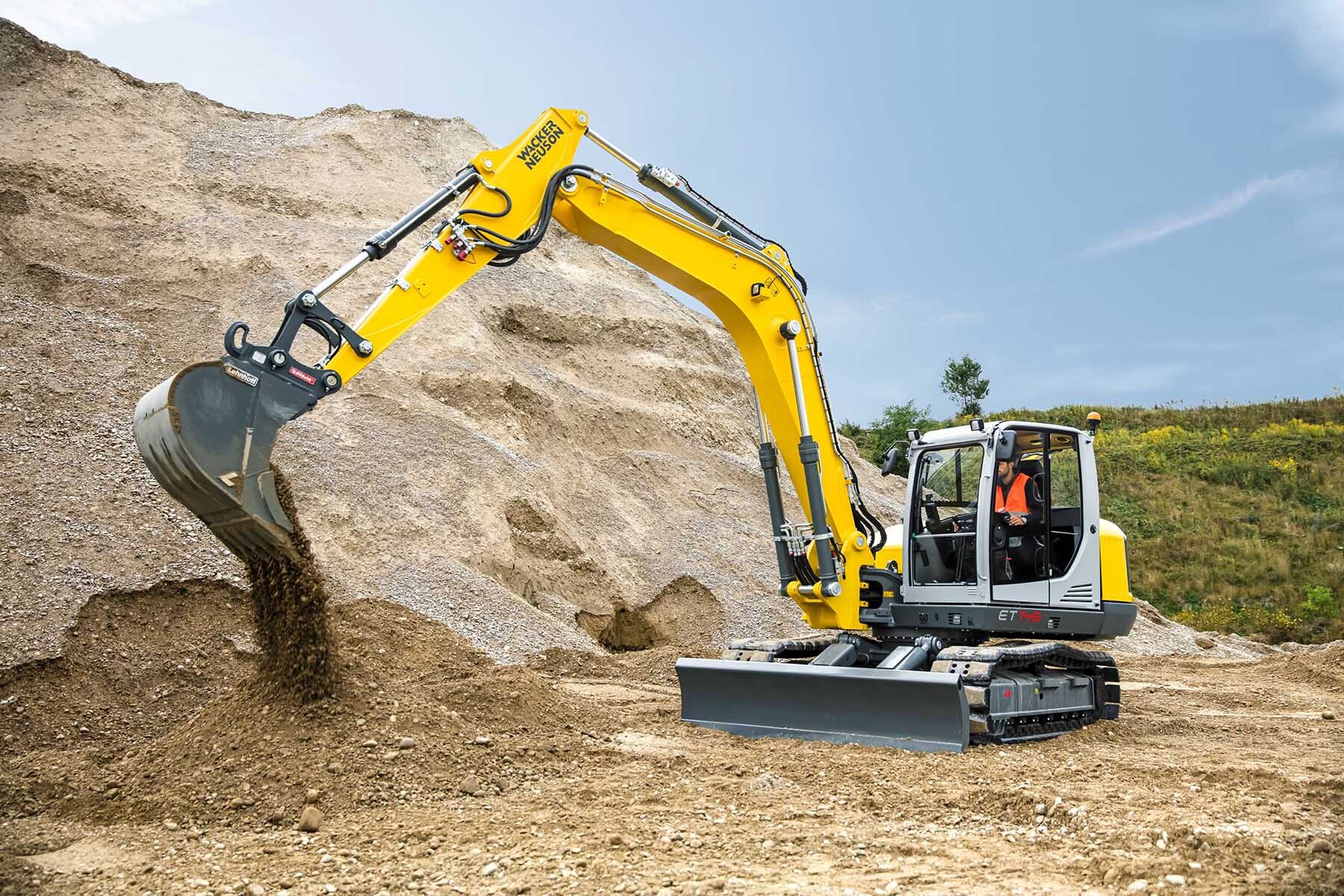
TAKEUCHI
Best known for its minis and midis, Takeuchi has gradually moved up the weight scales, cumulating in a pair of 15-tonne excavators: the conventional TB2150R and its offset-boom sibling, the TB2150.
The TB2150 has an operating weight of 15.8t and is powered by an 85kW Deutz engine, coupled to a well-respected Takeuchi, high-performance, Japanese hydraulic system. This excavator provides a maximum digging depth of 5.23m and a dump height of 6.04m with an 8.32m maximum reach at ground level. This is achieved from a compact package with rear slew radius of 2m, within a track footprint of just 2690mm x 3580mm. The standard build includes a dozer blade and steel tracks.
The offset boom allows the machine to dig 77 degrees to the left and 53 degrees to the right. Both machines enjoy a spacious and comfortable cab, full-colour LCD monitor, along with front mounted LED work lights and a reversing camera with in-cab display.
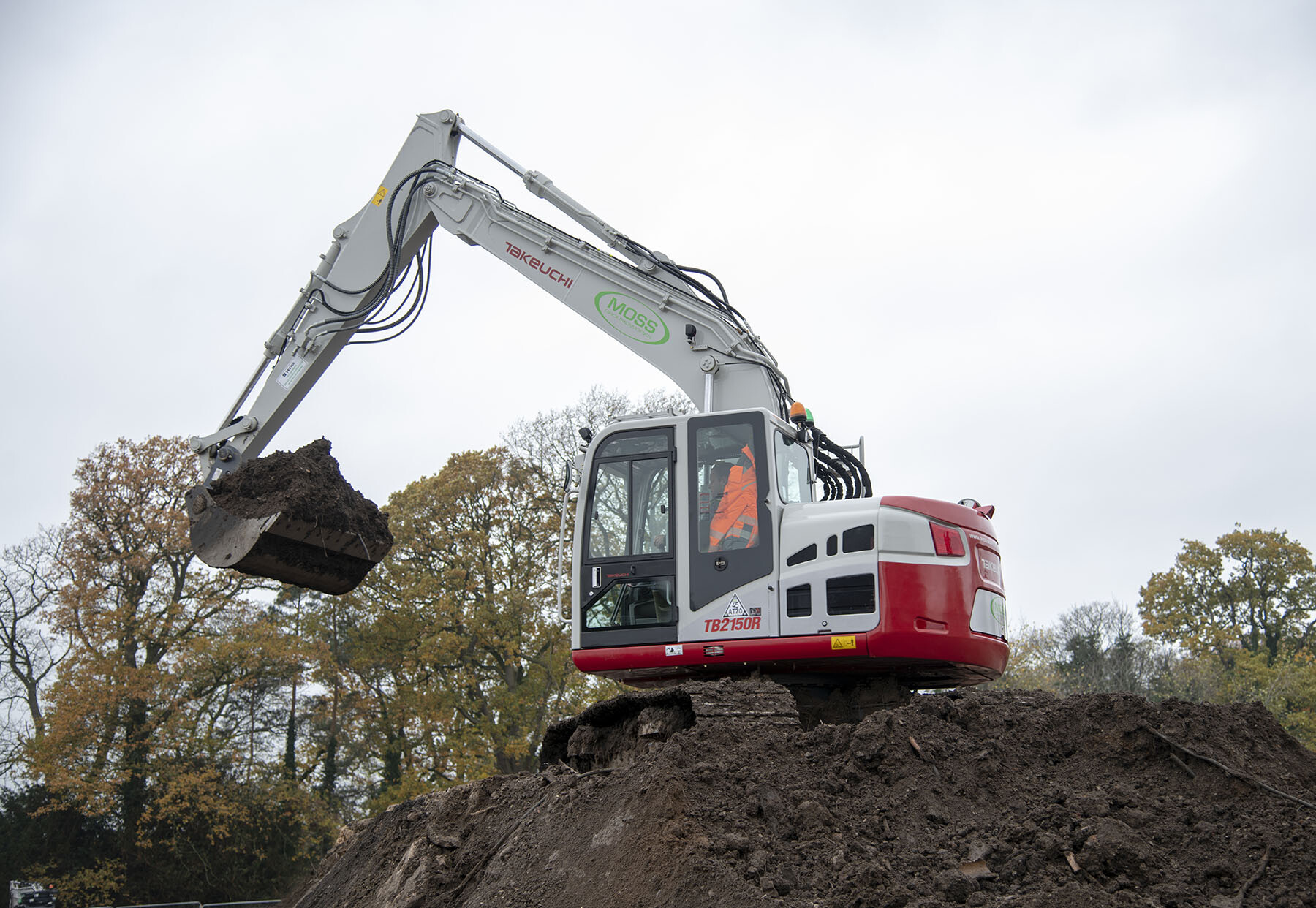
CASE
The conventional Case CX130D and short tail swing CX145DSR models are currently powered by Stage 4 Isuzu engines rated at 76.4kW, coupled to a Japanese hydraulic system. At 13.5t the CX130D offers a digging dept of 5.55m and dump height of 6.38m when equipped with the standard 4.63m boom and 2.5m dipper arm.
Weighing 14.6t, the CX145DSR short tail swing model has been designed to provide digging and lifting power in a more compact footprint that its conventional sibling. Case says that the compact counterweight and modified boom placement results in a highly manoeuvrable and powerful excavator, that is easy to transport and ideal for restricted jobsite conditions.
An improved cab is equipped with an adjustable air-ride seat and boasts more entry and foot space than the C Series. An innovative armrest design adjusts independently of the console, while still ensuring joysticks are always within reach. The 18cm widescreen colour monitor provides a constant view of the output of the rear camera.
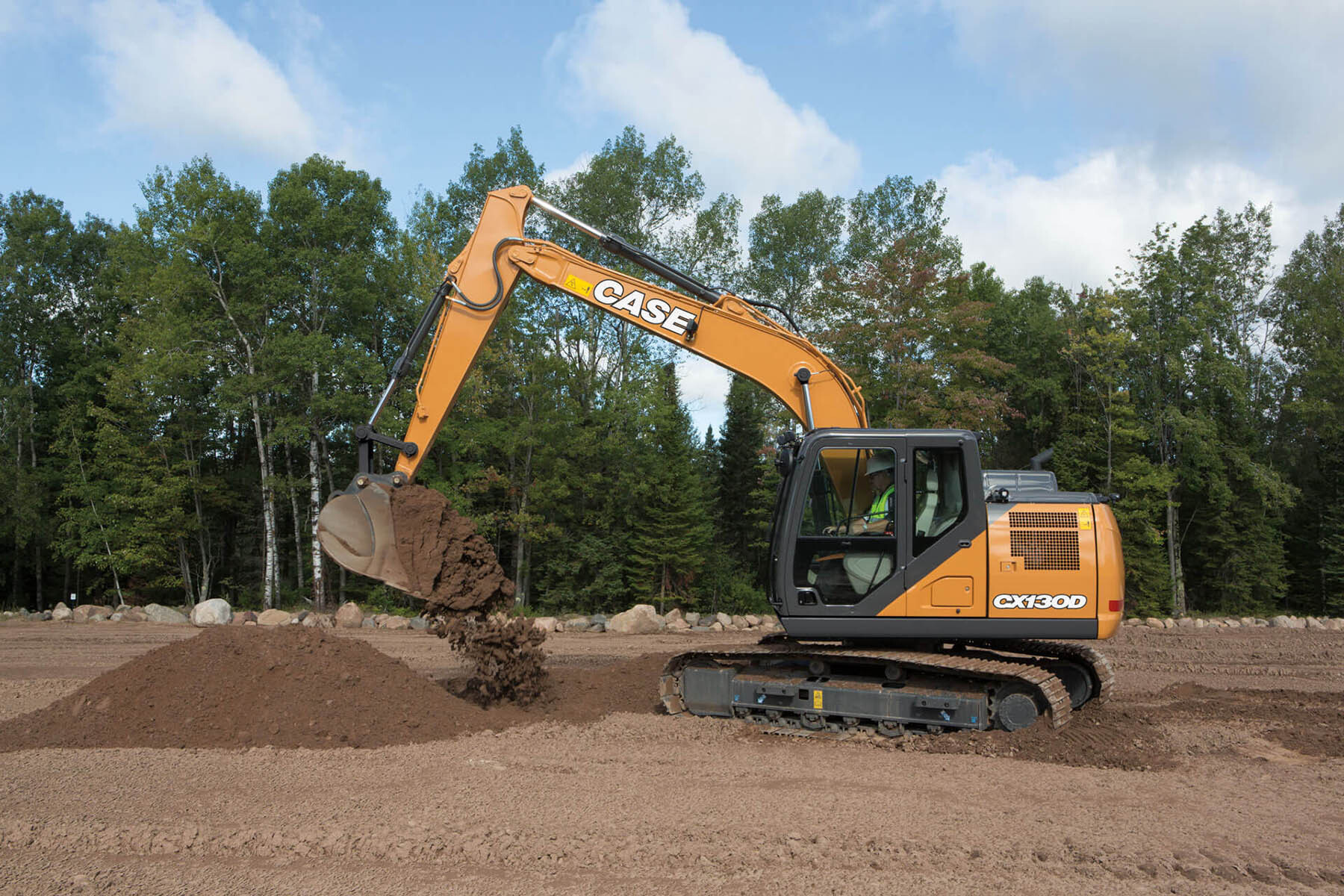
CATERPILLAR
Last March, Caterpillar launched two new 13.8-tonne crawler excavators, the 313 and 313GC models. The smallest models in Cat’s next generation of excavators, both feature a host of the latest filtration, lubrication and fluid management sub-systems to drive down the cost and time of performing routine servicing.
These two models feature a new, larger, but lower-profile cab, which provides improved ingress/egress and visibility. Both variants are powered by a C3.6 engine, the entry-level 313GC model rated is at 74hp (55kW) and does not require the use of AdBlue. The higher-powered 313 model is rated at 110hp (82kW) and comes loaded with a host of advanced technologies, including integrated 2D machine guidance and payload weighing.
Both provide a maximum dig depth of a fraction over 6m, a ground reach of 8.66m and a loading height of 6.42m. For those requiring a little more loading height, the 315CG model weighs in at 15.4t.
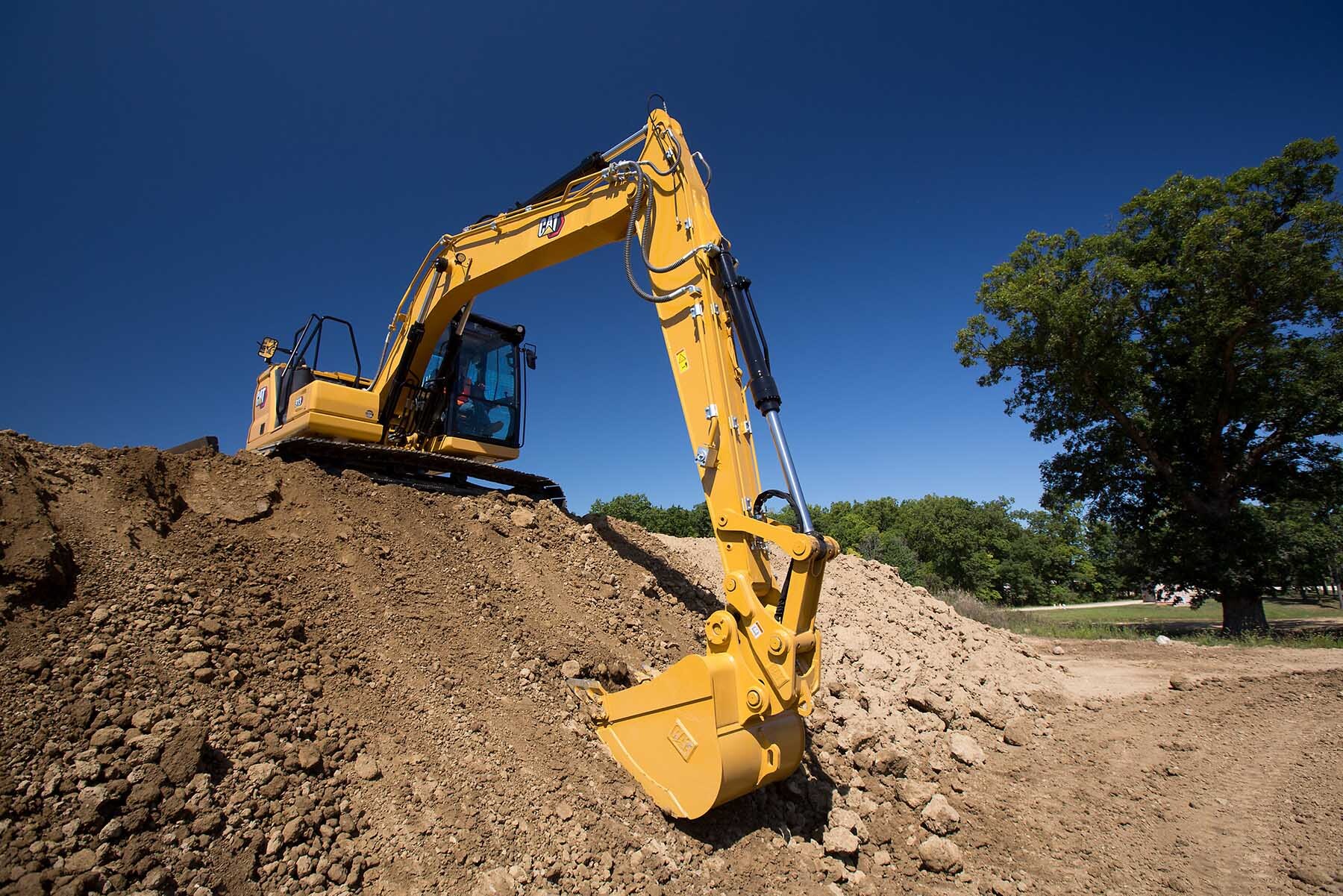
DOOSAN
The Doosan DX140-5 weighs-in at 14.4-tonnes and is powered by a Perkins 4.5-litre engine rated at 115hp (85.9kW), which meets Stage 4 of the emissions regulations without the need for a diesel particulate filter, but with an AdBlue system. With a one-piece 4600mm boom and a medium 2500mm dipper, the DX140-5 provides a maximum digging depth of 5635mm, a maximum digging reach at ground level of 8140mm and a maximum loading height of 6315mm. A 6980mm two-piece boom is available as a factory option, extending the working envelope, for example providing around 500mm more of digging depth and loading height.
The reduced tail swing configuration of the DX140CR-5 model adds another tonne to the standard operating weight of its conventional sibling and is powered by the same engine. This model provides a rear tail swing radius of just 1525mm and sits on tracks with a 3755mm by 2590mm footprint. A heavier excavator in a far more compact package.
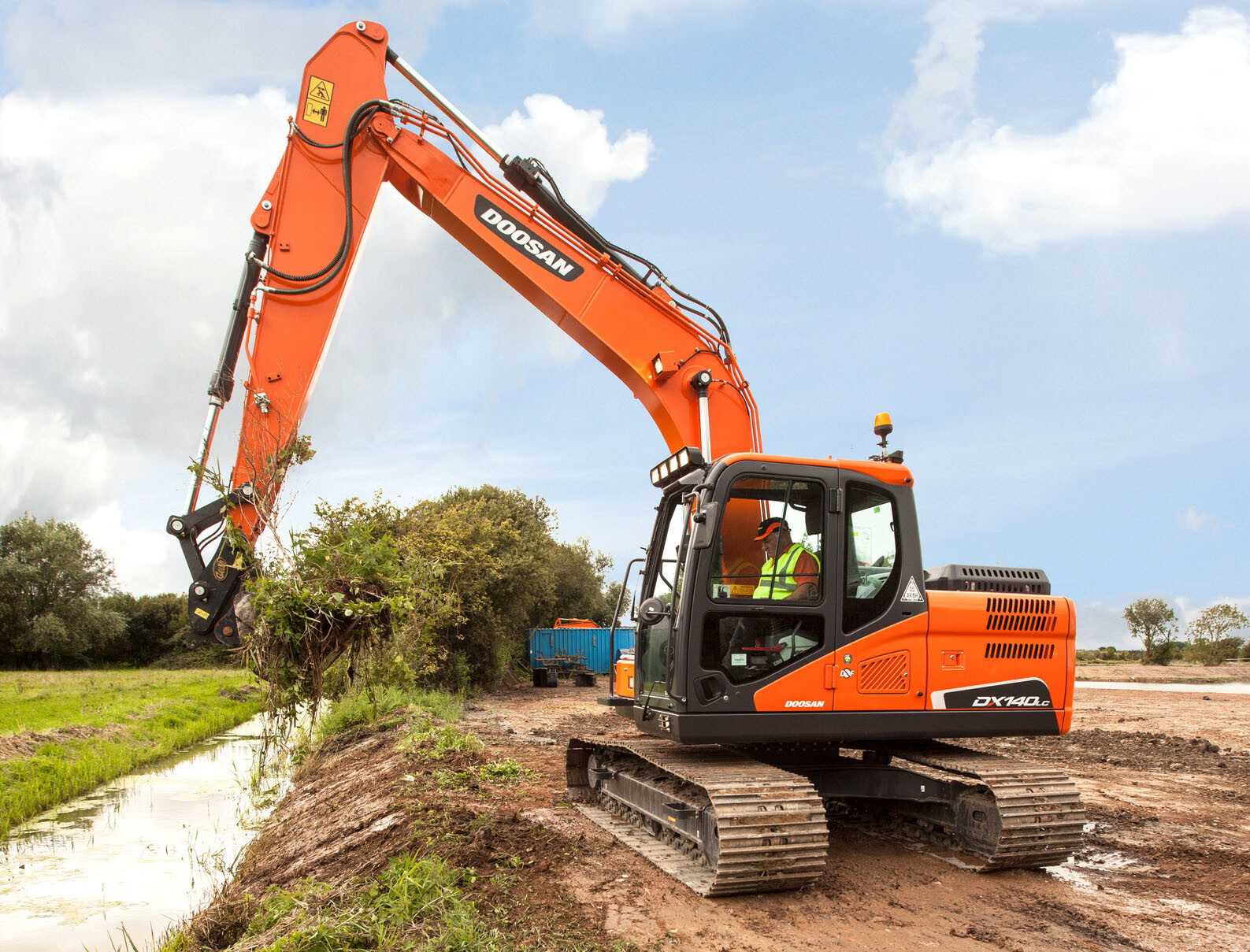
HITACHI
The lowest weight excavator in this review is the 12.1t Hitachi ZX130-6, powered by a Stage 4 Isuzu engine rated at 78.5kW. But do not be fooled by its operating weight, as this 12-tonner provides a maximum dig depth of 6060mm, a maximum dig reach at ground level of 8.79m. The ZX130-6 comes as standard with a five-year subscription to Hitachi’s telematics system, which includes remote monitoring of the excavator’s location, fuel consumption and mechanical health.
Weighing 13.9t the ultra-short swing radius ZX135US‑6 model is ideal for working in confined spaces. Power is provided by an 86kW Isuzu engine, with the extremely compact package providing a dig depth of 6070mm, with a 6550mm of dump height. Hydraulic feel and performance are all we have come to expect from this Japanese manufacturer, presumably with an even more advanced Stage 5 model in the wings.
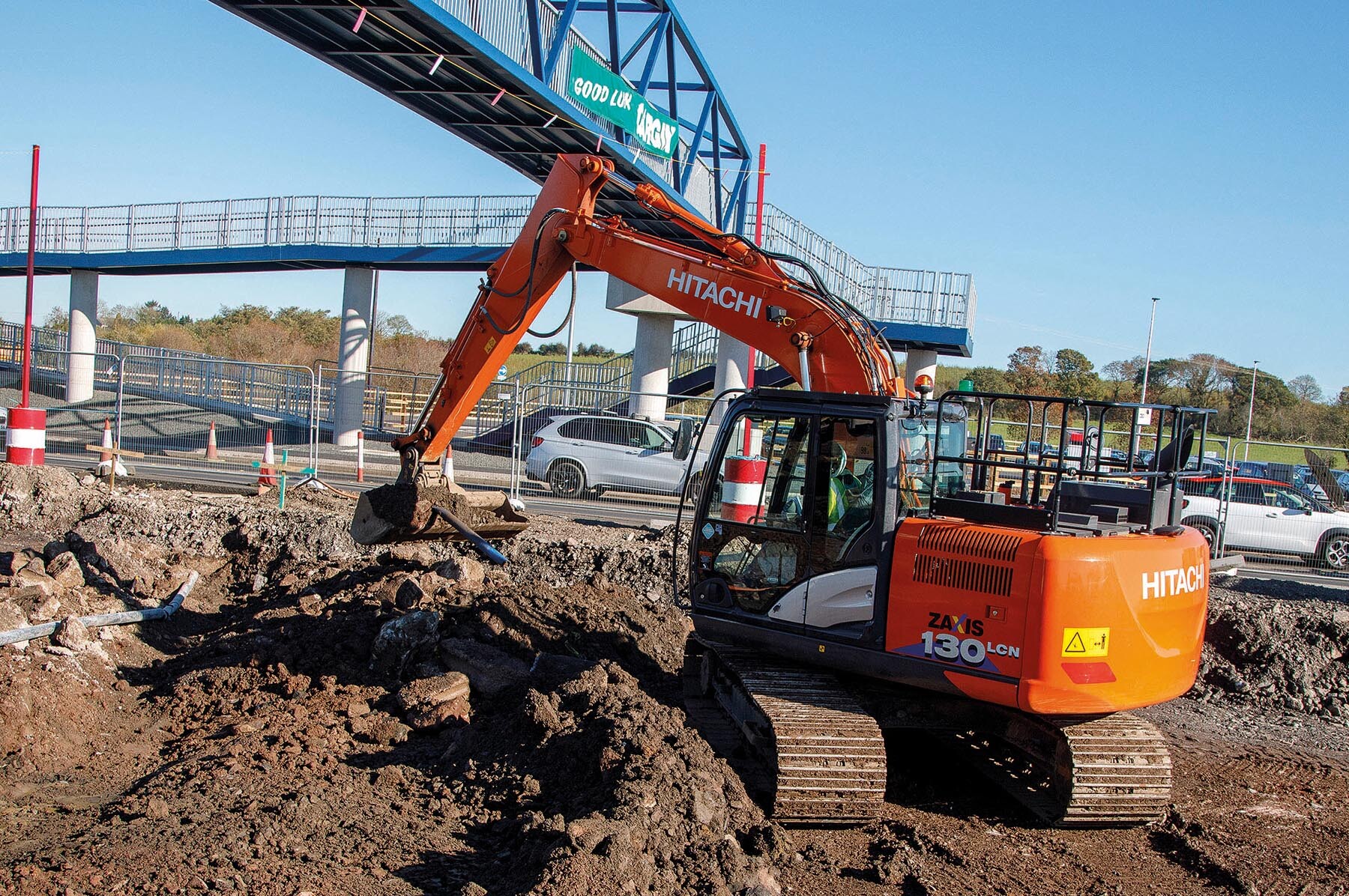
HYUNDAI
The Hyundai range of full-sized tracked excavators starts with the compact radius, 12.7t HX130CR model, which can be specified with a dozer blade and/or a two-piece boom., with the dozer blade adding another 900kg to its operating weight. The excavator is powered by a Stage 4 Perkins engine rated at 55kW, and provides a maximum dig depth of 5570mm, a maximum digging reach of 8220mm, all with its standard 0.59cu.m bucket.
At 14t the conventional counterbalance HX140 model is powered by a 95kW Cummins engine. Configured with a 4.6m boom and 3.0m arm, it provides a maximum dig depth of 6000mm and a dump height of 6330mm, with its 0.71cu.m bucket. For those wanting maximum performance from an excavator that fits in a similar space, the next model in the Hyundai range is the 15.2t, compact radius HX145CR, powered by a Stage 4 Perkins engine rated at 92.7kW.
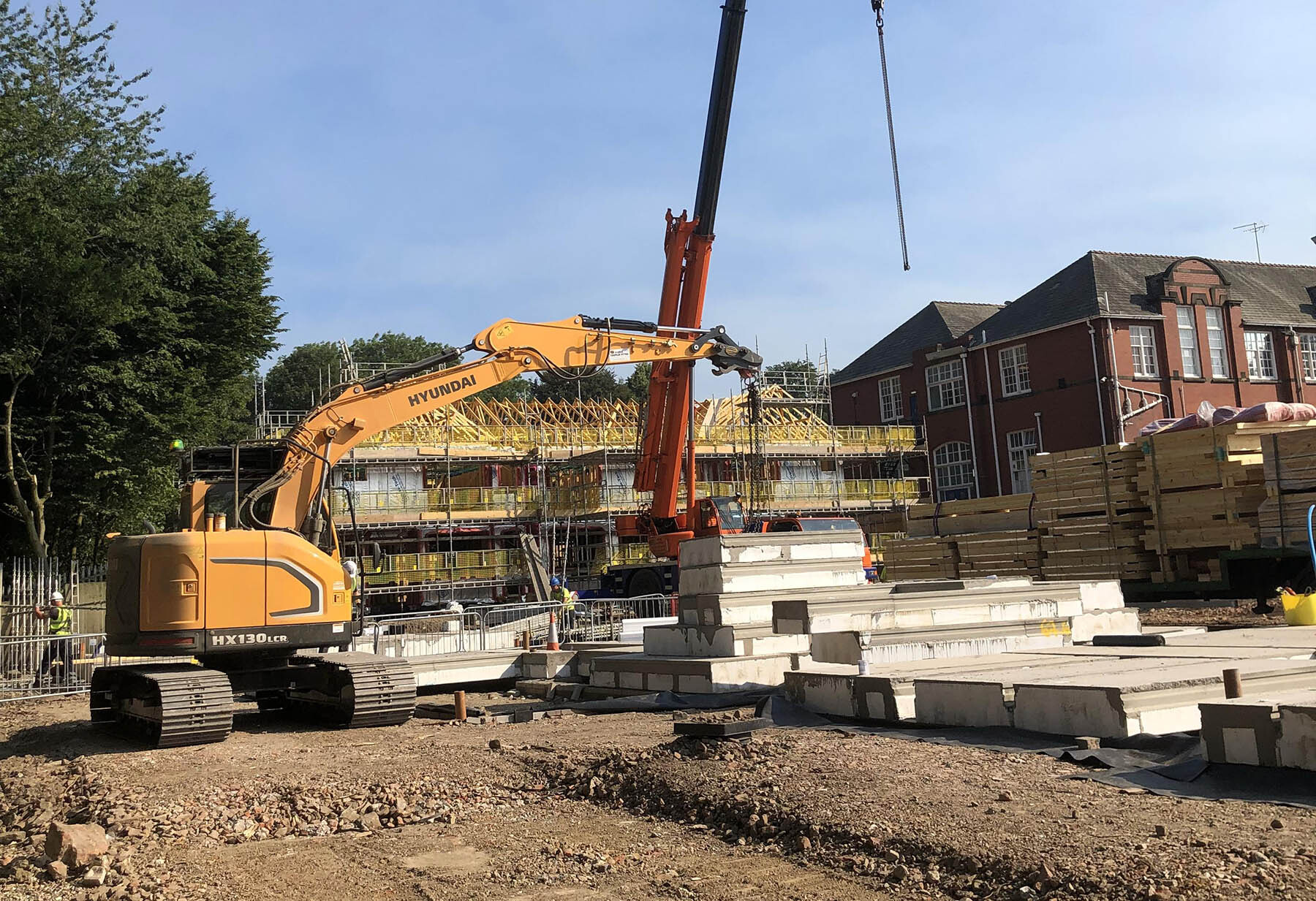
JCB
Weighing-in typically at 14.4t, the 131X model is the smallest in JCB’s new X Series of tracked excavators and is powered by a 74hp (55kW) in-house engine. With a standard 4.7m boom and a 2.5m arm, it provides a maximum dig depth of 5560mm and a load over height of 6680mm.
At 2.5m, the new design is wider than the previous JS generation of crawlers, allowing the fitment of JCBs larger and modern CommandPlus cab, which is located on four hydraulic mounts to help provide a good working environment for the operator. JCB claim that they have made significant strides in soundproofing the excavator, with up to a 68% reduction of in-cab noise levels.
Operators also benefit from seat-mounted servo levers, with a new command pod to the right of the seat, which brings together all the switches and controls in a single seat-mounted unit. A new 18cm monitor with intuitive menus can be accessed through an automotive-style rotary controller.
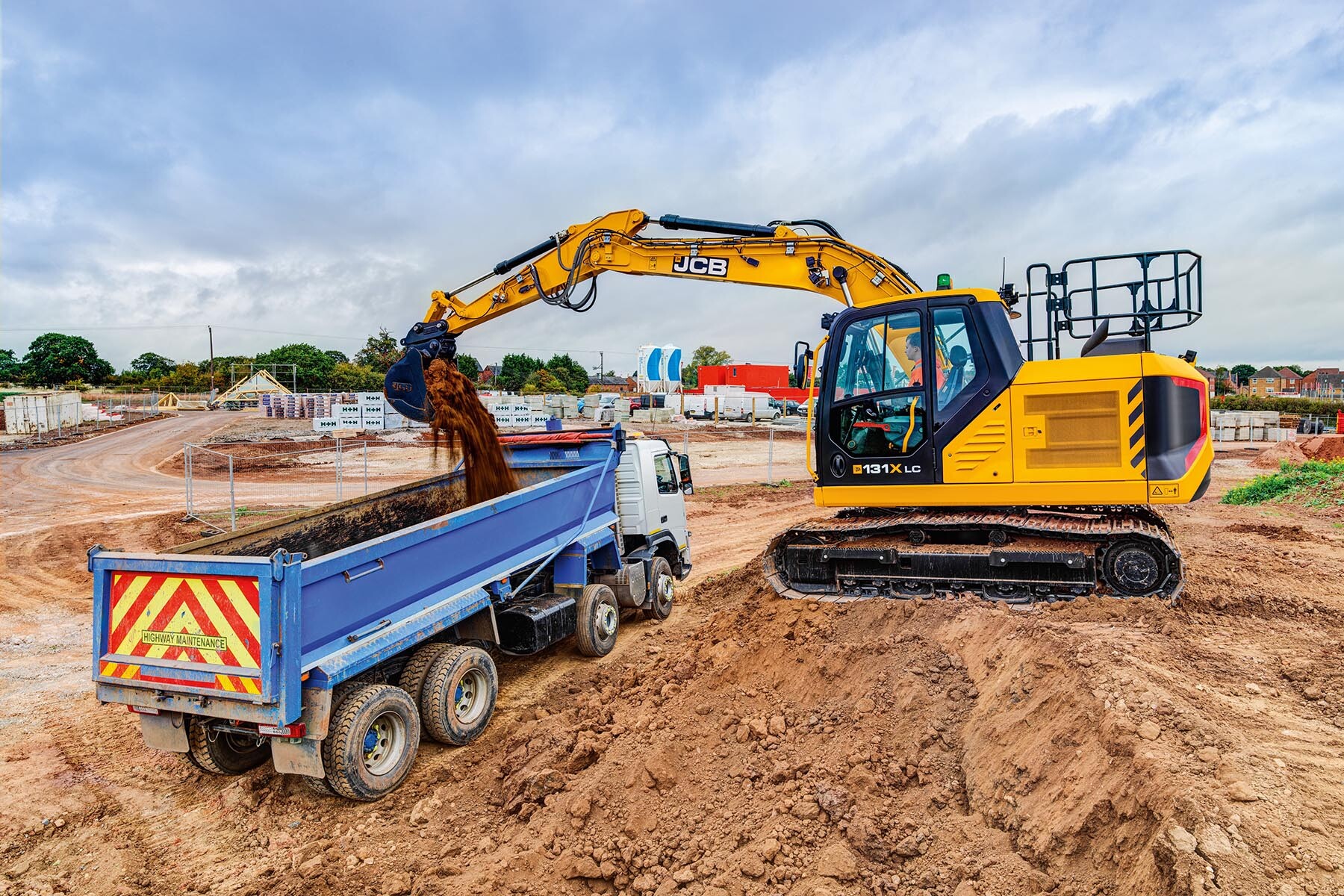
KOMATSU
With a weight range of 13.4- to 14.5-tonnes depending upon specification, the Komatsu PC138US-11 is an ultra-short tail swing excavator, powered by a Stage 4 Komatsu engine rated at 69.7kW. An advanced electronic control system manages the airflow rate, fuel injection, combustion parameters and aftertreatment functions to optimise the engine’s performance. To ensure product reliability and durability, Komatsu developed the entire system, including the control software, all integrated into the machine’s on-board diagnostics and through Komatsu’s telematics system.
A major safety feature incorporated as standard is Komvision, providing a 360degree bird’s eye view around the excavator, the output from which is displayed on the 18cm LCD widescreen in-cab monitor. The cab is mounted on viscous isolation dampers for low vibration levels and boasts a high degree of comfort, which includes a heated, high back, air suspension seat, complete with fully adjustable armrests.
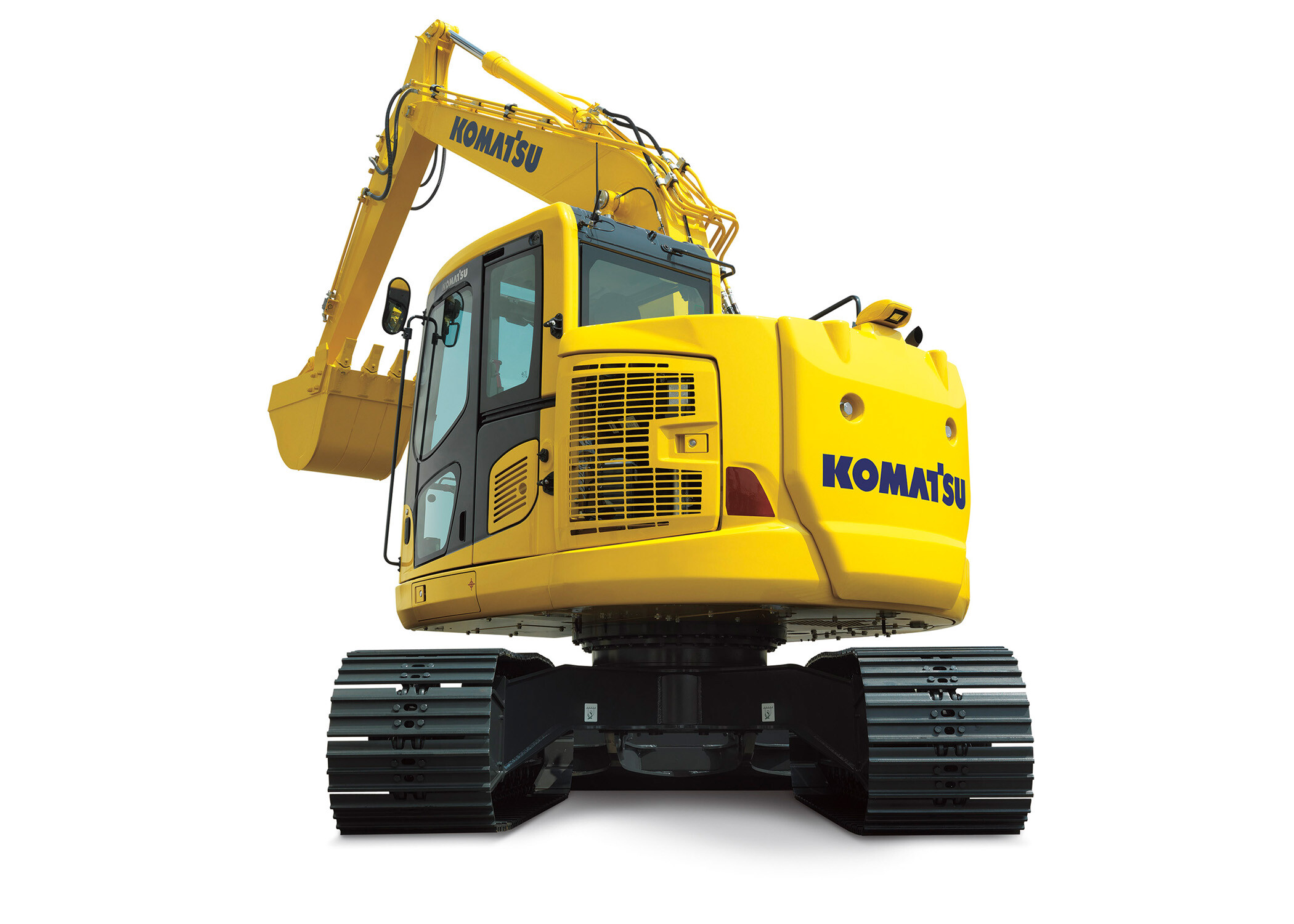
KOBELCO
Weighing 14.2t, the Kobelco SK130-11 is powered by a 78.5kW Isuzu engine. When fitted with the standard 4.68m boom and 2.38m arm, it provides a maximum digging depth of 5520mm and a load over height of a fraction over 6m. The new short radius SK140SR-7 is powered by an 86kW Isuzu engine, 10% more power than its predecessor and is mated to a new hydraulic control system, to further deduce digging cycle times.
The cab is ultra-modern with easily accessible operating controls and features an enormous 25cm colour monitor. Further aiding the operator are new joysticks, which have a shorter, more precise movement. The use of LED backlighting on all control switches is pleasing on the eye, but more importantly, reduces eye strain.
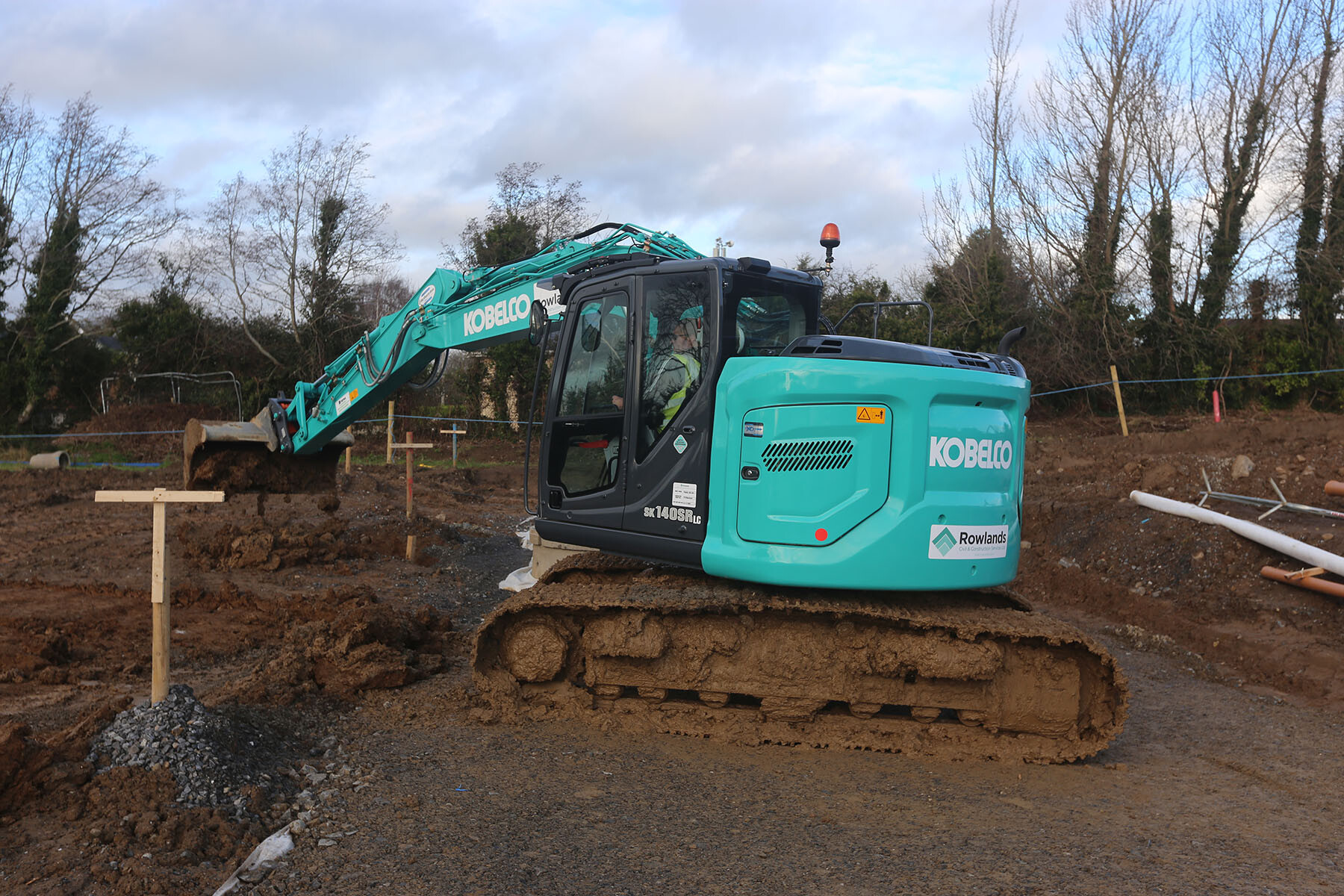
LIUGONG
Weighing-in at 13.8t the Chinese-built LiuGong is powered by a Stage 4 Cummins QSB engine rated at 84kW. This well-known engine uses a high pressure common-rail fuel injection system, turbo charger and air-to-air intercooler along with electronic engine controls to optimise machine performance. Other major components are also from blue-chip suppliers. The hydraulic system is said to regenerate oil from the cylinders more efficiently, thus reducing heat, improving fuel efficiency and reducing cycle times.
A computer-aided intelligent power control system allows the 915E’s mechanical, electrical, and hydraulic systems to work together, while an improved pump system delivers efficient oil output under lower engine speeds, resulting in fuel efficiency and reduced noise levels.
Equipped with a 077cu.m buckets on the standard 4.6m boom and 2.5m arm, the LiuGong 915E provides a maximum digging depth of 5470mm and a dump height of 6310mm. The new larger cab features an increased glass area for better visibility, together with a rear-view camera.
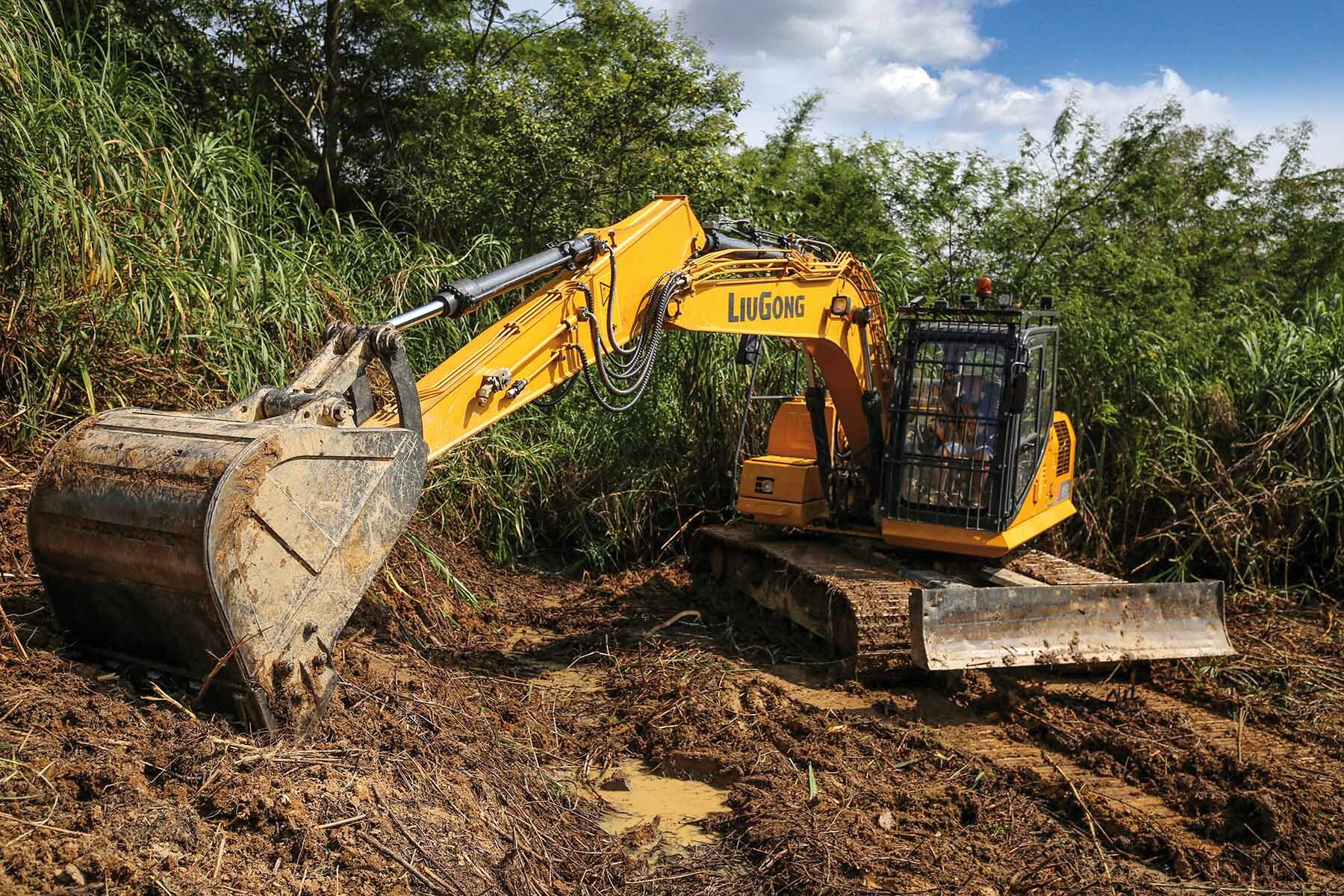
LIEBHERR
The compact Liebherr R914 weighs-in at 14.9t, provides a rear tail swing of just 1.55m, and is powered by a 90kW in-house engine. The excavator is the smallest model in the company’s excavator range and, as one would expect, is available with a variety of front-end working equipment. This includes four booms; a 4.60m mono boom, a 4.85m two-piece boom, a 4.30m offset mono boom and a 4.90m offset two-piece boom, together with a choice of four dipper stick lengths.
Engine speed and performance settings allows stepless adjustment of engine output and hydraulic power through engine speed, with three different modes to match the application. The tool control function provides 20 pre-adjustable pump flows and pressures to match specific hydraulically-powered attachments.
A spacious air-conditioned cab has unobstructed visibility and is equipped with an air-sprung seat with vertical and horizontal suspension. A large high-resolution colour display with video-compatible touchscreen, allows the operator to monitor and control the excavator’s functions.

VOLVO
The conventional Volvo EC140E weighs-in at 13.2t and, equipped with a 4.6m boom and a 2.5m arm, provides a maximum digging depth of 5600mm and a maximum digging reach of 8360mm. The larger short radius ECR145E model has a tail swing radius of 1.49m, weighs-in at 14.4t and, with the same front end, provides a maximum dig depth of 5530mm with the same digging reach. Both are powered by a Volvo Stage 4 engine rated at 90kW, and are designed for buckets between 0.82 and 1.01cu.m.
The advanced hydraulic system is combined with a fully electronic control system, to improve controllability and response time. The system also features an Eco mode, together with auto idle and engine shutdown functions, all to further improve fuel consumption and reduce emissions. The cab features a large glass area, a wide entrance, an improved climate control system and a giant 20cm LCD monitor.
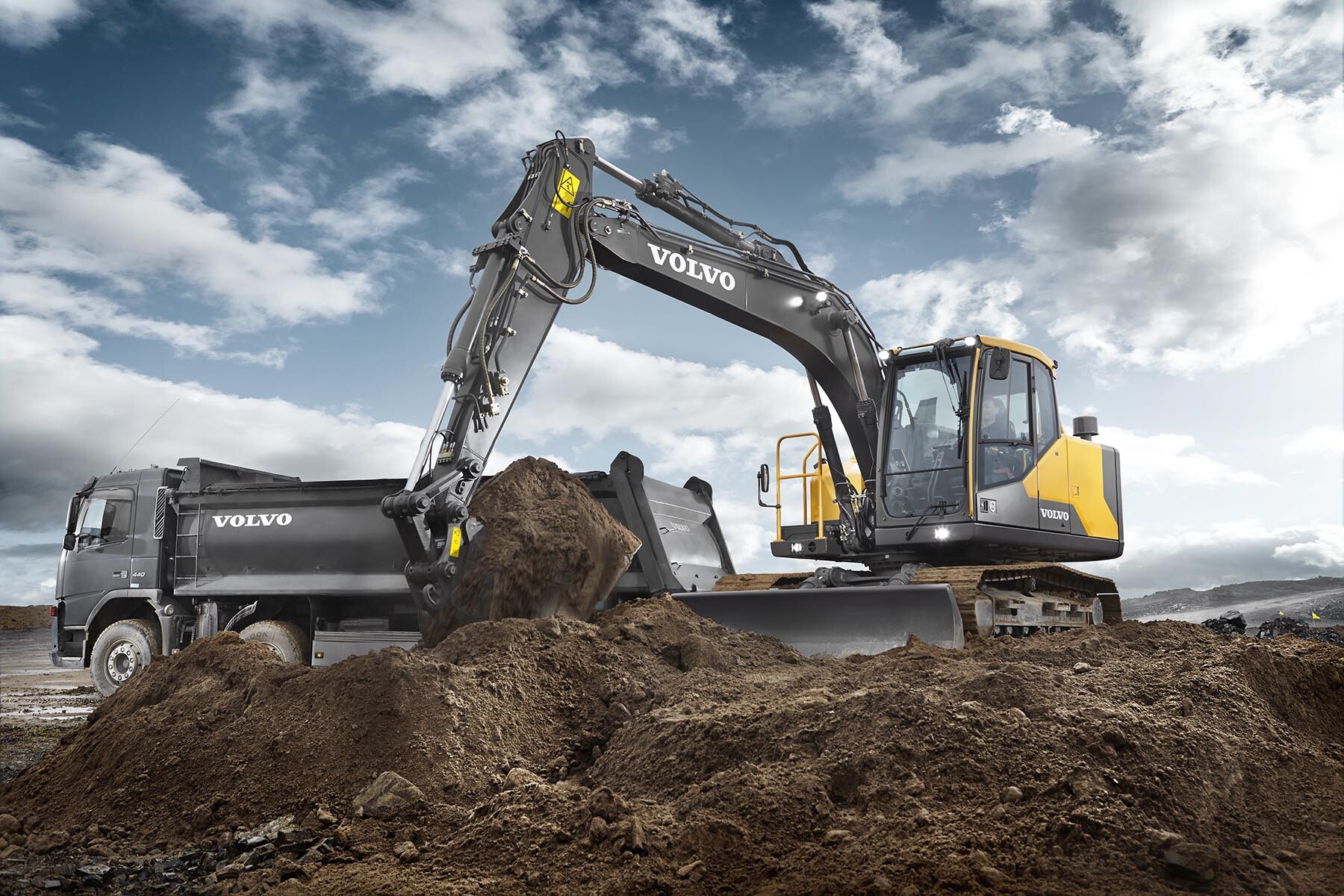
SANY
Chinese construction equipment giant Sany is making its presence felt in the UK, with the 14.9-tonne SY135C conventional excavator just within the limits of this review. This is powered by a 73kW Isuzu engine and comes with a 4.6m boom and 2.5m dipper stick as standard, together with a 0.80cu.m bucket. This cost-effective excavator offers the operator to change working modes, via the monitor.
Although technically falling outside of the scope of this review, if a zero-tail swing excavator is required in this weight category, the 16t SY155U model may be worth a look. This is also supplied with a 4.6m boom and 2.5m arm, but its standard bucket is 0.60cu.m.
A feature of the SY155U is its ultra-modern electro-hydraulic control system. With a dual-pumps and a dual-circuit constant power control system, the driveline is said to deliver impressive power to the working equipment.
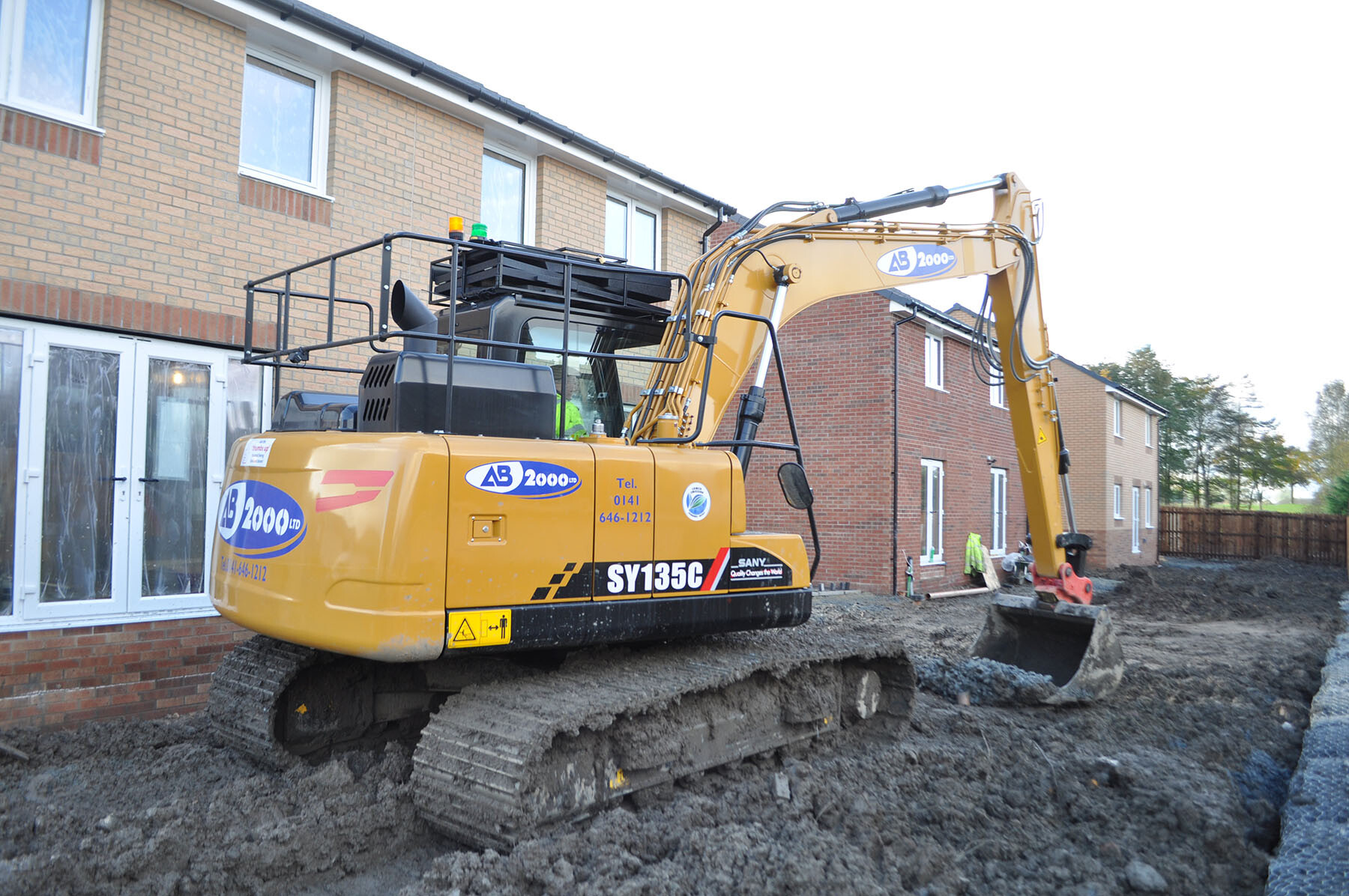
Article featured in the April 2021 issue of Earthmovers Magazine. Subscribe to the industry-leading construction machinery publication here.